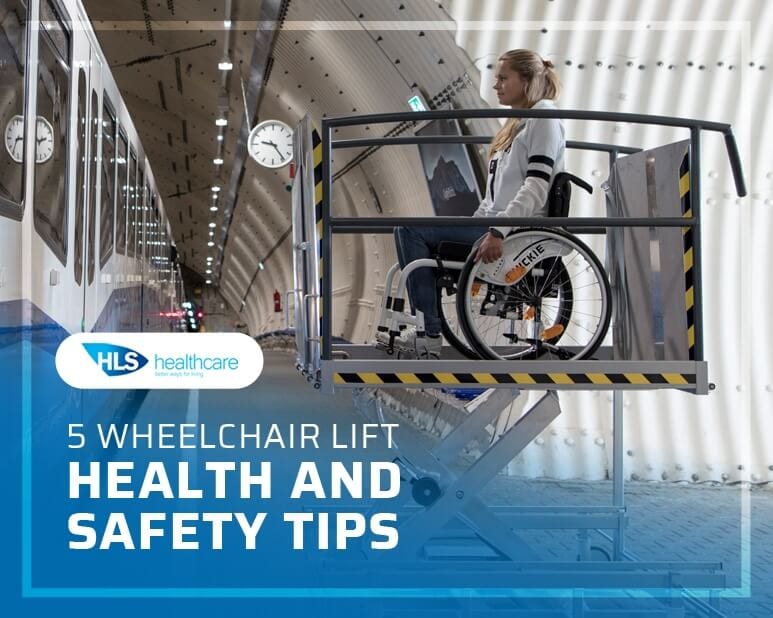Safety Tips, HLS Website Blog
5 Wheelchair Lift Health and Safety Tips
A wheelchair lift is one of the safest and most comfortable ways to move someone with a mobility issue between floors in a home or building. These lifts can come in a range of different styles, from models that are designed to move both the user and the wheelchair, to models that have an integrated chair that can be used to transport the user after they are placed in the chair using a hoist.
Importantly, no matter what kind of wheelchair lift you’re using, it’s crucial to make sure that you know how to make the most out of the system, so you can protect the person you’re caring for, and keep yourself safe at the same time. Here are a few tips you should keep in mind.
1. Always Secure the Lift User
Keeping the wheelchair user safe when the lift is in motion should be a primary concern for anyone who is using one of these accessories. Chair-style lifts often come with a belt system like a seat belt. This should be secured before you put the lift into motion. On the other hand, a platform lift which seats both the wheelchair and the user has a flap that can automatically fold up to create a barrier. Make sure these flaps work correctly and lock the wheelchair wheels before starting motion.
2. Keep Stairs Clear
If the wheelchair lift is situated somewhere close to the stairs, it’s best to make sure that you keep other people out of the way while the system is in use, as this will help to prevent injury to both the other people and the wheelchair user. If you share the home with other adults or children, and you’re using a platform lift, then you might be able to situate the lift somewhere further away from the stairs to avoid the interaction.
3. Get Support for Other Mobility Aids
Usually, homes that feature chairlifts should also come with duplicates of other mobility aids that can be available at both the top and the bottom of the lift. For instance, an extra wheelchair might be necessary for a stairlift, because the chair itself cannot be transported in the lift. On the other hand, you might want to invest in mobile hoists that can be used around the house to help people with mobility issues get in and out of their wheelchair.
4. Keep Lifts Out of the Way
When deciding where to implement a wheelchair lift, make sure you think carefully about the amount of space that a wheelchair user needs to get around. Installing a platform lift in a corridor simply isn’t practical, as your wheelchair user will need to have enough space to turn their chair and access the lift safely. Similarly, when you’re using a stairlift, you might want to consider investing in models that can easily fold up and be stored out of the way when they aren’t in use.
5. Think about Fire Safety
Finally, since a wheelchair lift is about making the home safer and more accessible for people in wheelchairs, it’s important to make sure that you put safety first. Think about purchasing a lift that can operate on a backup battery or generator in times of crisis. This will make sure that people in wheelchairs can still get downstairs and out of the house during a fire or a power outage. Make sure that you check that backup battery regularly, and change it when necessary to make sure that the lift always performs when it is needed.

